Is It Scary OR Dangerous?
Unpacking the Distinction.
"THERE IS FREEDOM WAITING FOR YOU, ON THE BREEZES OF THE SKY, AND YOU ASK 'WHAT IF I FALL?' OH BUT MY DARLING, WHAT IF YOU FLY?"
- ERIN HANSON
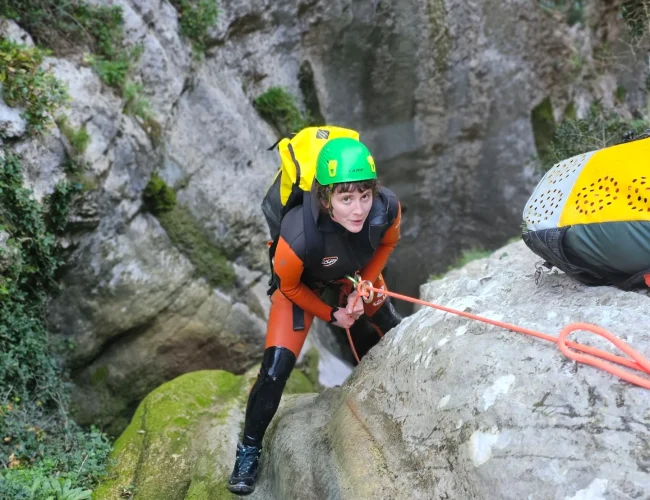
This blog is for educational purposes and is not meant to be taken as medical or professional advice. Wild Sky Adventure Guides takes no responsibility for any accidents that may occur as a result of following information found in this blog.
One of the most rewarding aspects of being a guide is witnessing people confront their instinctual fears. It is a universal human reaction and an incredibly intimate experience to witness. I have come to believe that the greatest value we receive from adventure sports is in teaching us how to navigate the battle between our logical brain and fearful lizard brain. To illustrate this concept I have adopted the phrase “Scary, Not Dangerous.”
I have observed this concept countless times, and it’s beautifully captured in the HowtoADHD video that is embedded below. The video showcases one of my clients talking about how she worked through her fear on a trip with us. I highly recommend that you watch the video before reading the rest of this post.
However, I want to delve deeper into the language and concepts explored in the video and talk about the line between scary and dangerous and the practical lessons that we can learn through exploring this distinction.
Wild Sky Trips Minimize, But Don’t Eliminate Danger
To begin, I want to address the obvious. Canyoning is an adventure sport, and thus danger can never be fully eliminated. There will always be a certain amount of danger in Wild Sky adventures. When we say “Scary, Not Dangerous” we don’t mean that there is no danger at all. What we mean is that we are actively implementing risk management strategies to minimize that amount of risk to the lowest level possible. It falls into the category of an acceptable level of danger that our clients and guides are knowingly and enthusiastically subjecting themselves to.
The Subjectivity of Scary:
Fear is an internal response, a complex reaction deeply rooted in our minds. When confronted with the unknown, a reminder of an uncomfortable memory, or a situation that triggers one of our many hardwired instinctual responses, our brains initiate a cascade of physiological and psychological reactions.
Flight or Freeze:
We commonly think of the fear response as “fight or flight”, but a more acccurate description is “flight or freeze”. I have lost count of the number of times I have seen people freeze when they trigger an instinctual fear response. Their conscious mind is unable to make their body move. They are “frozen” in fear.
This subjective experience is highly personal, and incredibly real to us. However, it’s essential to recognize that, in the end, fear exists solely within our minds, not in the external world.

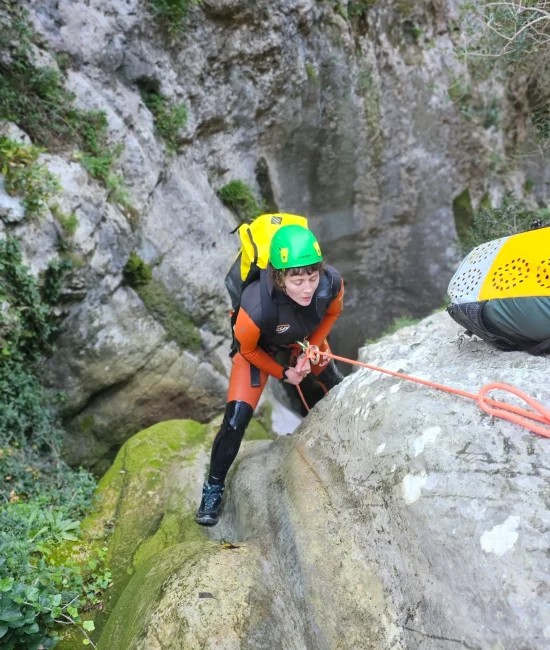
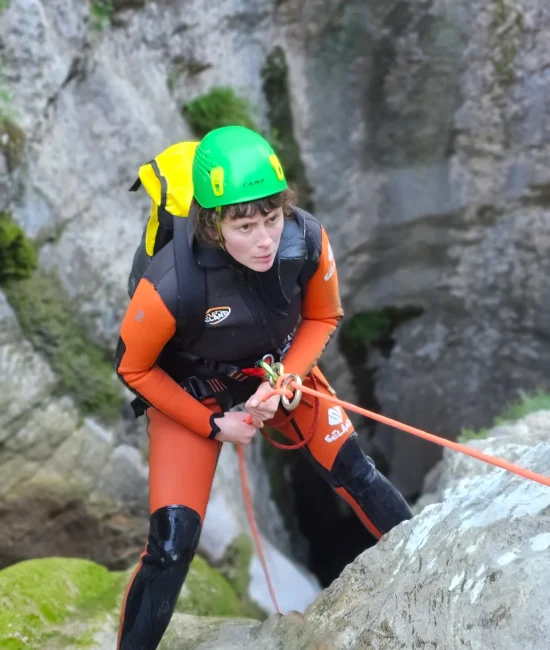


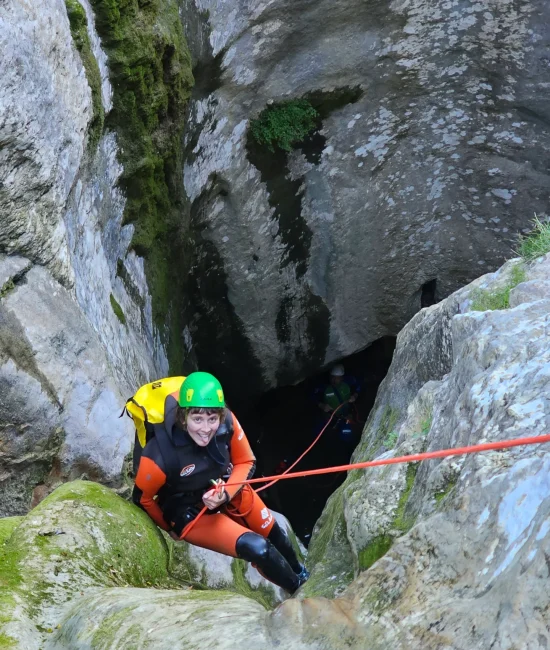
The process of confronting and moving through fear while canyoning.
The Objectivity of Danger:
On the other hand, danger is an external reality, an objective presence in the world. It exists independent of our perceptions or emotional responses. Something can be dangerous irrespective of whether we find it frightening. Understanding this separation is crucial: just because something induces fear doesn’t automatically categorize it as a genuine threat to our safety.
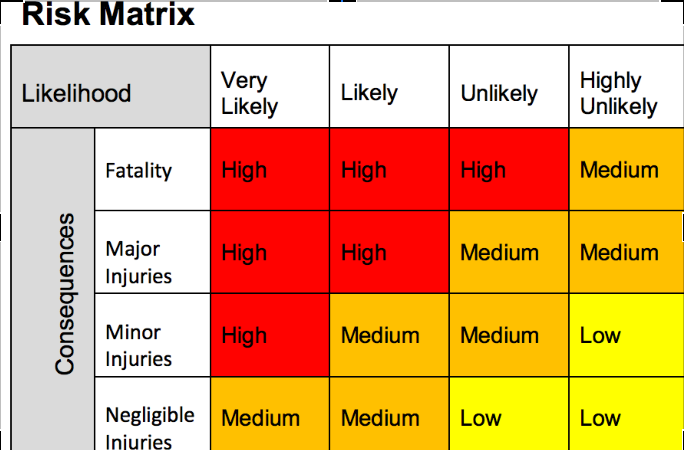
The Risk Matrix is an objective formula that we talked about in a post on the theory of risk. READ IT HERE!
The Human Tendency to Conflate:
As humans, our natural inclination often leads us to conflate the sccary with the dangerous. Most of us, if asked, would say that scary IS dangerous. We tend to see the two of them as the same thing. This is where the intangible value of adventure comes in. By submitting ourselves to scary experiences that aren’t dangerous we understand that distinction because we have traveled through the fear response and now we understand how that fear reaction feels.
Fear is Blind to the Upside
Why is it important to know deeply the difference between scary and dangerous? Because while fear is an incredibly useful human emotion that protects us and makes us aware of danger, it is blind to the upside. Fear can only focus on what can go wrong. Fear is a narrow lens, blocking our view of the possibilities for a positive outcome.
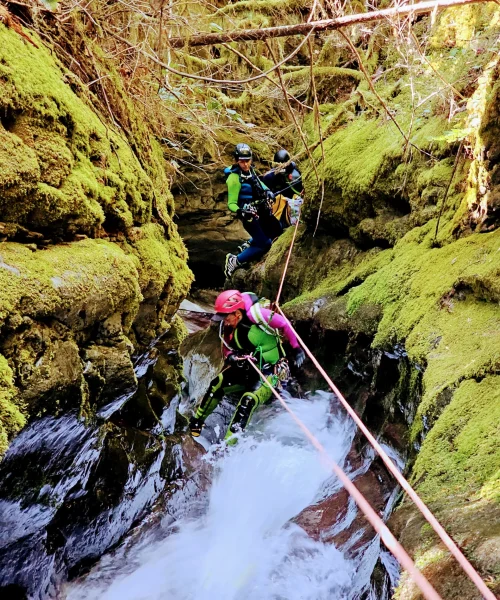
"There is freedom waiting for you, On the breezes of the sky, And you ask 'What if I fall?' Oh but my darling, What if you fly?" - Erin Hanson
There is great freedom available to us when we come to recognize fear for what it is; a friend, and a guide. Fear is a human emotion that wants the best for us, but in overbearing fashion, is unable to see the full spectrum of possibilities available to us.
Growth comes when we move through fear.
When we are afraid our brain will be constantly looking for an offramp, or an escape. The “flight or freeze” fear response means that our brain will try to trick us, convince us that we can escape the fear by avoiding it. But, once we have established that the situation is scary, but not dangerous, then we must not bargain with our fear. We must not open the door: because once that bargain is made, our fear is in charge and we become servants to the lizard brain experiencing an emotional reaction. The best way out of a scary, not dangerous experience is to move through the fear, not around it.
Navigating Fear Effectively
To navigate fear effectively, we must recognize and explore the distinction between scary and dangerous. We must acknowledge that our emotional responses, while valid, do not always align with objective reality. Something may feel scary, but that doesn’t automatically make it dangerous. This realization empowers us to approach fear with a more rational mindset, distinguishing between the subjective experience and the objective truth.
The Intangible Benefits Of Adventure
By exploring fear and understanding the interplay between our instincts and outside reality, we arrive at a realization. By putting ourselves into situations that are scary, but not necessarily dangerous, we can move through fear, learn its contours, and understand its nuances.
Now we begin to see fear as a friend, looking out for our best interests. But fear is not in charge, it is not at the wheel making decisions. By turning the inner eye inwards and examining our fears with our rational brain we gain a wider field of vision, we start to see the world as it could be if we dare to befriend our fear and let it guide us as we explore the world around us.
I am not a medical professional.
I am merely a humble canyon guide. Because of my background in adventure sports I have experienced some very intense and sustained fear responses in my life. This has lead to reflection and a personal understanding that I have detailed in this blog post. None of this is meant as medical or psychological advice. I have no training in either and recognize that the breadth of human experience is immense and some or all of this does not apply to everyone.
